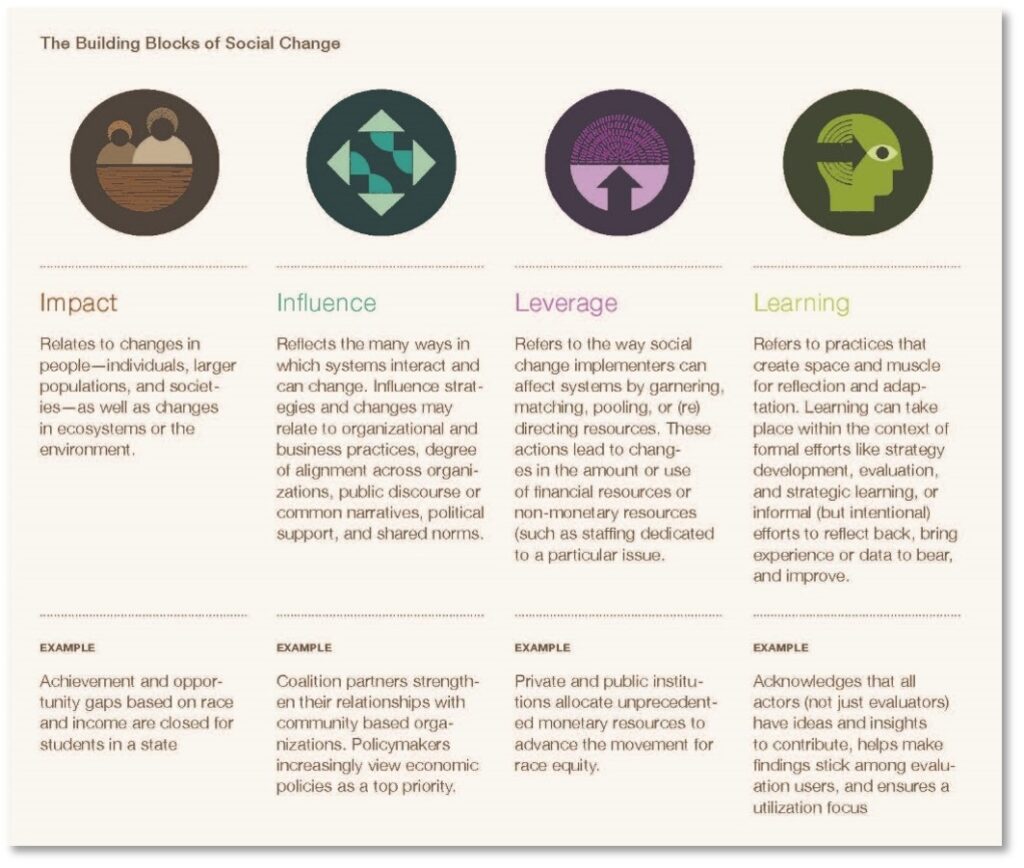Hello from Seattle! My name is Joel Gutierrez, and I am a Director at ORS Impact. We partner with a lot with funders eager to evaluate and learn from their investments in complex systems change initiatives.

By naming and understanding if and how systems changes are occurring, social change actors can see the full spectrum of change that is necessary and gain vital knowledge for strategic development. Successfully addressing vital social issues—like the movement for racial justice—requires large-scale initiatives that address equity, intersecting points of oppression, and systems. We recently published an update to a framework – Impact, Influence, Leverage, and Learning (I2L2) – that offers guidance on grouping systems change outcomes and helpful ways of thinking about complex change work. We hope you find it useful!
What do we mean by systems change?
Big social change initiatives often focus on strategies that address the root cause of social problems—for instance, changing policy, narratives, partnerships and networks, power structures, and practices. These types of changes are what we consider to be systems change—outcomes aimed at changing the rules of the game or how systems operate. They focus on shifting the way individual organizations, coalitions or groups of organizations, governments and funders, and society operate so that impacts (i.e., more downstream changes for people and the environment) can be achieved at scale, beyond the scope of what an individual investment can likely affect.
Some helpful ingredients for systems change thinking
Equity as a noun and a verb. Equity as a noun refers to tangible, concrete changes in people and systems. Equity as a verb refers to changes in the way we go about our business or the values, processes, and practices we use every day.
Transforming or reforming systems. To ensure alignment of strategy and expectations for change, it can be helpful to have agreement among actors on the need to reform or transform a system. Reform efforts try to make changes within current systems by changing roles, policies, incentives, or practices. The status quo of the system is maintained. Alternatively, to achieve equitable changes at scale and end harm and historical oppression, systems may instead need to be transformed—by dismantling them to create something anew.
Hot Tips
Four key takeaways for social change actors
- Center equity not only in your long-term impact goals but also in your efforts to change systems and in your ways of working.
- Changes within systems can be tough to identify; I2L2 can help you gain clarity on what changes are important (and for who) that aligns with desired scale of impact.
- Systems change is a long game that requires commitment and complex, nonlinear progress.
- Learning about system changes and adapting approaches can help spur greater impact.
The American Evaluation Association is hosting Nonprofits and Foundations Topical Interest Group (NPF TIG) Week. The contributions all this week to AEA365 come from our NPF TIG members. Do you have questions, concerns, kudos, or content to extend this AEA365 contribution? Please add them in the comments section for this post on the AEA365 webpage so that we may enrich our community of practice. Would you like to submit an AEA365 Tip? Please send a note of interest to AEA365@eval.org. AEA365 is sponsored by the American Evaluation Association and provides a Tip-a-Day by and for evaluators. The views and opinions expressed on the AEA365 blog are solely those of the original authors and other contributors. These views and opinions do not necessarily represent those of the American Evaluation Association, and/or any/all contributors to this site.
